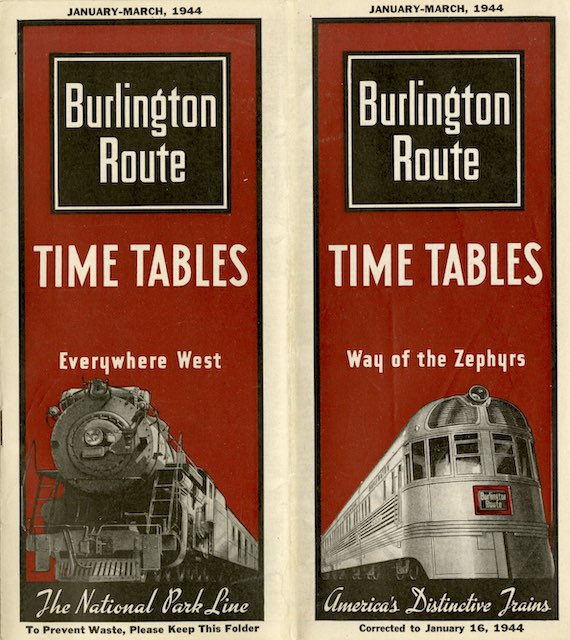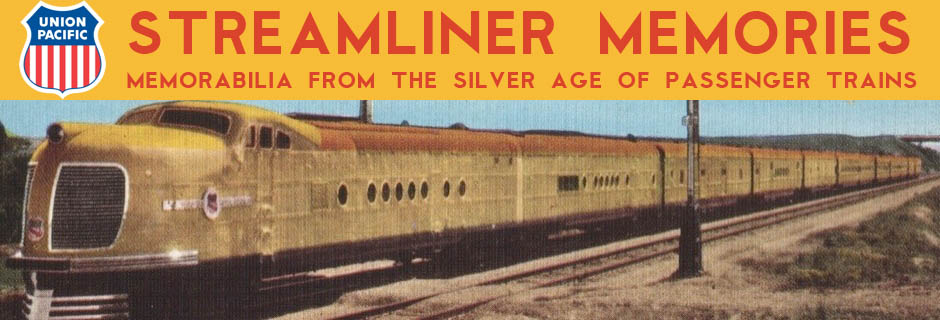Yesterday’s 1939 timetable had a four-page insert of large ads, plus full-page ads on the inside and outside back covers. We’ve previously seen a 1940 timetable with the same arrangement. Yet today’s 1944 timetable has no large ads, and even the small ones are few in number.
 Click image to download a 22.2-MB PDF of this 36-page timetable.
Click image to download a 22.2-MB PDF of this 36-page timetable.
This might be due to wartime paper shortages. Other railroads continued to dedicate full pages of their timetables to ads, but Burlington might have responded to higher paper costs or restrictions a little differently. I suspect, however, that Burlington decided independently of the war, to change its marketing strategy and to rely more on magazine and other advertising than on advertising in its timetables.
Even the back cover of this timetable, usually prime advertising space, is dedicated instead to a list of Burlington ticket agents. The inside front cover has an index and general information and the inside back cover is just a continuation of timetables (specifically, connections with other trains at St. Louis, Kansas City, Omaha, and Denver).
The largest ad in the timetable isn’t for the Burlington but by the Association of American Railroads bragging that 71 percent of inter-city freight ton-miles in 1943 were moved by the railroads. If you believe the Bureau of Transportation Statistics, railroads today are carrying less than 30 percent of freight ton-miles, while trucks are carrying around 45 percent.
As it happens, I don’t believe the Bureau of Transportation Statistics, which a few years ago was saying that railroads were carrying 40 percent and trucks 30 percent. Then in around 2010 the bureau changed the way it estimates truck transport and suddenly trucks became the number one mode. I find this change questionable, but even if the old method was right, 40 percent carried by rails today is a lot less than the 71 percent during the war. To be fair, that’s 40 percent of total ton-miles while 71 percent is just intercity ton-miles.
In any case, the point is that the biggest ad in the timetable was placed by an outside entity, not the Burlington itself. Another ad promotes Parmalee Service, which transferred people between train stations in Chicago or from train stations to hotels. There are also small ads for American Express, Railway Express, and Western Union.
A few ads did promote Burlington trains, including the Zephyr-Rockets on page 21, Silver Streak Zephyr on page 22, and zephyrs in general on page 24. But these are basically used as filler to occupy space that would otherwise be empty. For one reason or another, Burlington had lost interest in using its timetables as a form of advertising.
